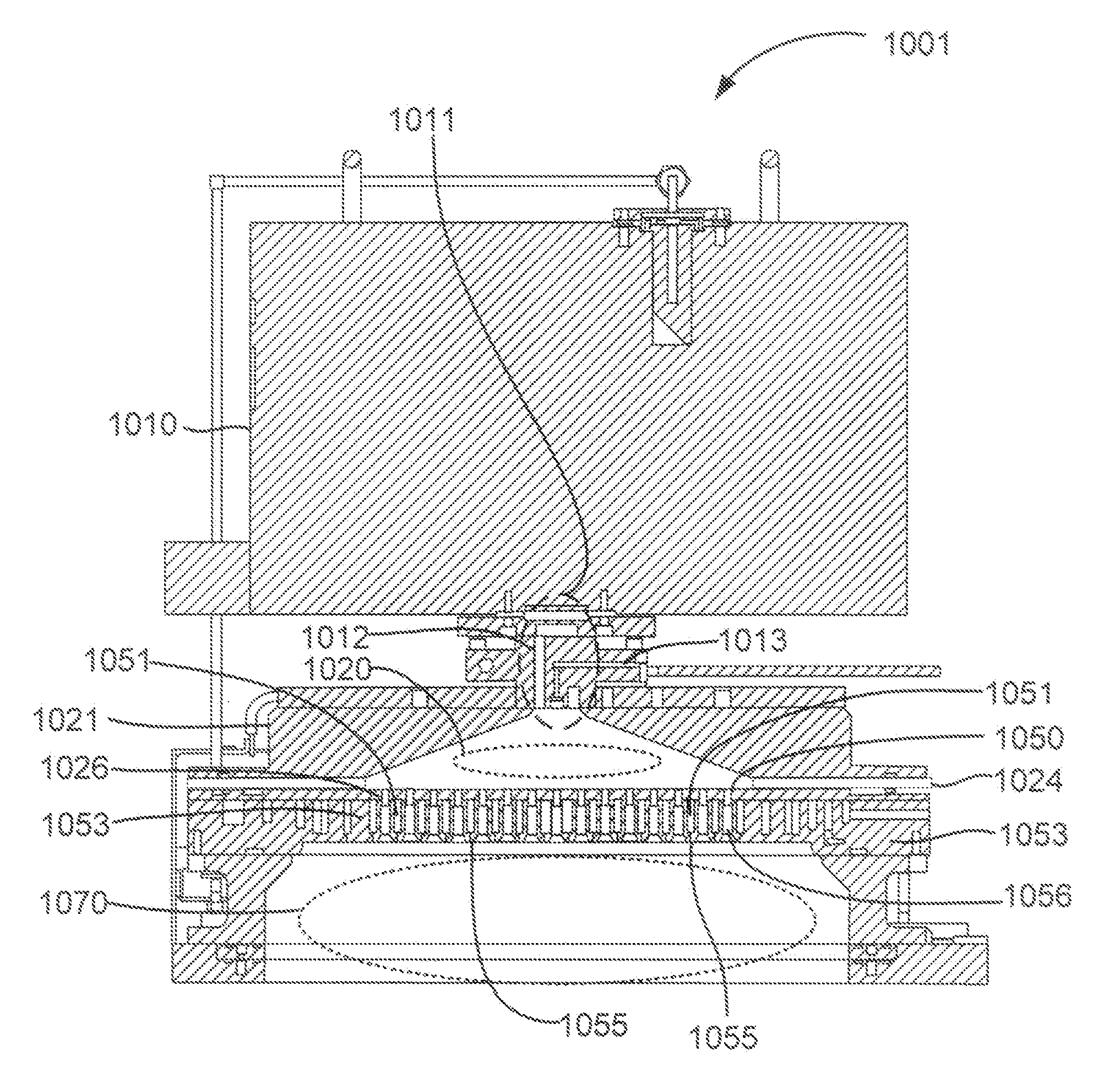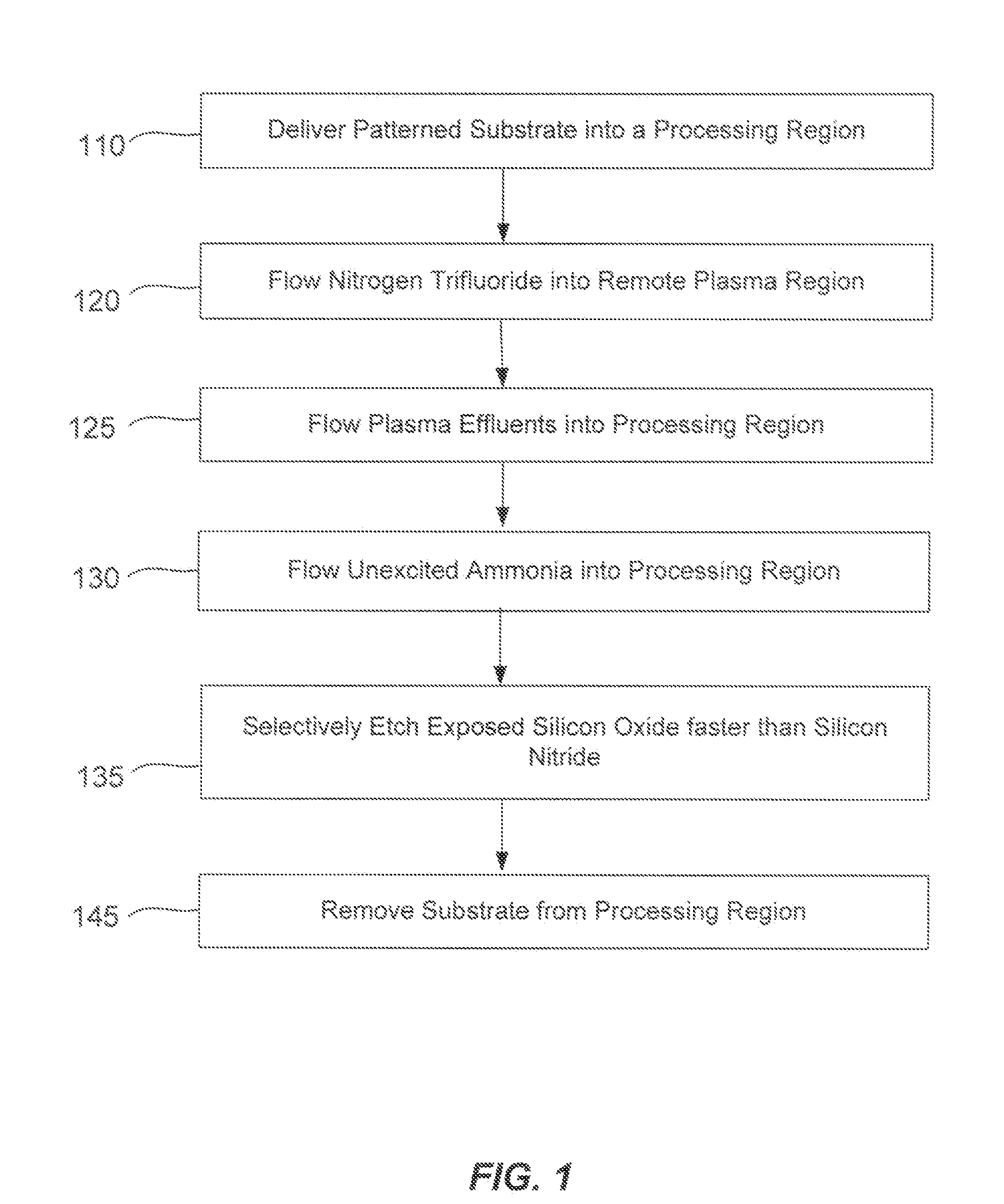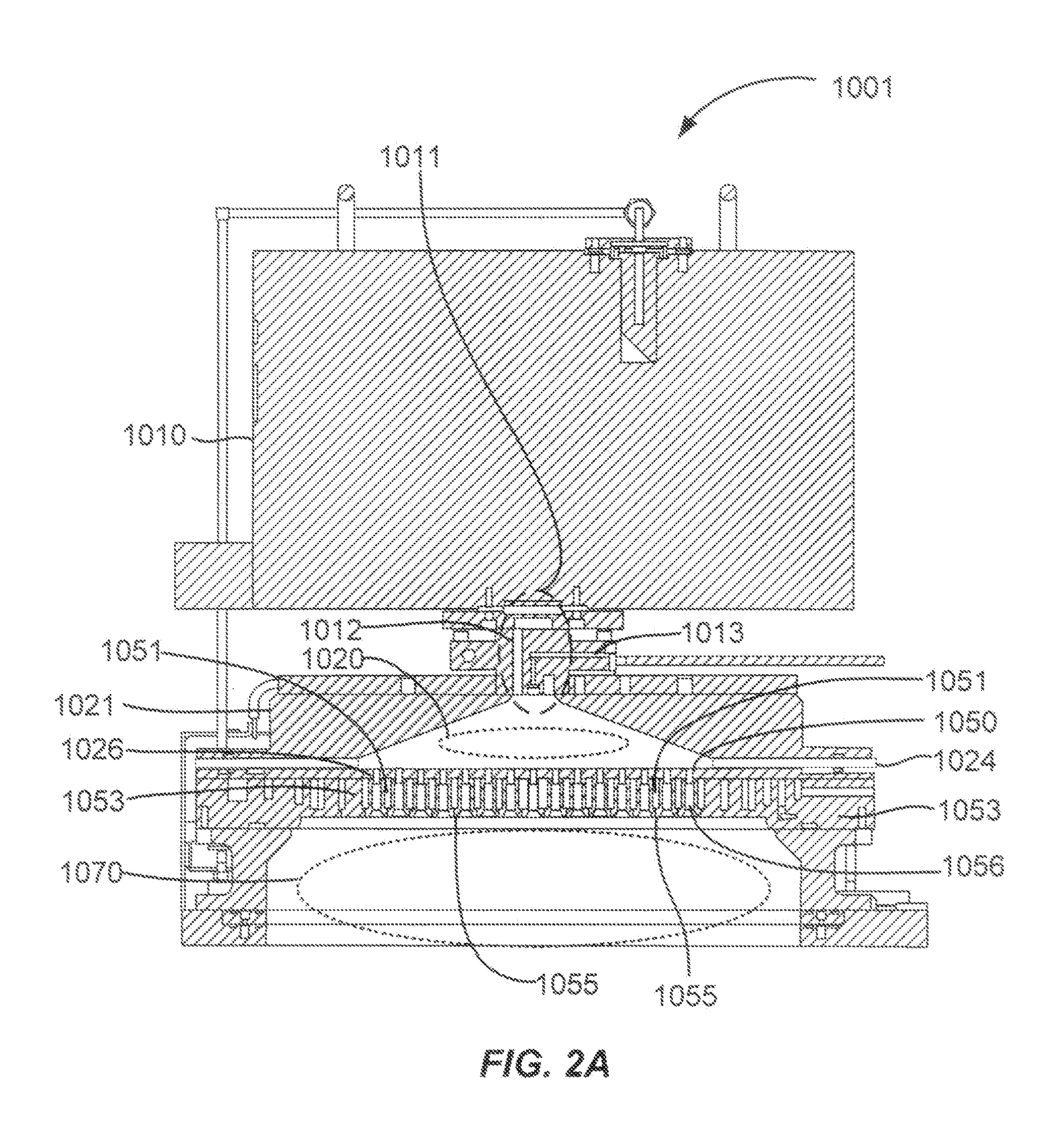Radical-component oxide etch
- Summary
- Abstract
- Description
- Claims
- Application Information
AI Technical Summary
Benefits of technology
Problems solved by technology
Method used
Image
Examples
Embodiment Construction
[0015]A method of etching exposed silicon oxide on patterned heterogeneous structures is described and includes a remote plasma, etch formed from a fluorine-containing precursor. Plasma effluents from the remote plasma are flowed into a substrate processing region where the plasma effluents combine with a nitrogen-and-hydrogen-containing precursor. Reactants thereby produced etch the patterned heterogeneous structures with high silicon oxide selectivity while the substrate is at high temperature compared to typical Siconi™ processes. The etch proceeds without producing residue on the substrate surface. The methods may be used to remove silicon oxide while removing little or no silicon, polysilicon, silicon nitride or titanium nitride.
[0016]Selective remote gas phase etch processes have used a hydrogen source of ammonia (NH3) and a fluorine source of nitrogen trifluoride (NF3) which together flow through a remote plasma system (RPS) and into a reaction region. The flow rates of ammon...
PUM
 Login to View More
Login to View More Abstract
Description
Claims
Application Information
 Login to View More
Login to View More - R&D
- Intellectual Property
- Life Sciences
- Materials
- Tech Scout
- Unparalleled Data Quality
- Higher Quality Content
- 60% Fewer Hallucinations
Browse by: Latest US Patents, China's latest patents, Technical Efficacy Thesaurus, Application Domain, Technology Topic, Popular Technical Reports.
© 2025 PatSnap. All rights reserved.Legal|Privacy policy|Modern Slavery Act Transparency Statement|Sitemap|About US| Contact US: help@patsnap.com



